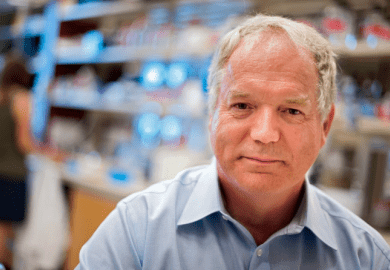Canada is producing far too few family practice doctors to meet its nationwide need, leaving its medical schools struggling to answer politicians demanding solutions.
Canada has more than 90,000 physicians, or 2.4 per 1,000 people – a share well below the average among developed nations. Its annual recruitment also has been running substantially behind target – 1,400 new family physicians last year for 2,400 openings – leaving more than 4.5 million Canadians without a family doctor.
The Canadian prime minister, Justin Trudeau, promised in last year’s election campaign to spend C$3.2 billion (£2 billion) on the problem. But he hasn’t yet settled on a strategy, and experts are making clear the shortfall won’t easily be solved with money – and could require some kind of fundamental changes in approach by the nation’s 17 medical schools.
Chief among the many challenges, said James Dickinson, a professor of family medicine and community health sciences at the University of Calgary, is the attractiveness to students of choosing a specialty field over general medicine. Barely more than half of Canada’s 90,000 physicians are general care or family doctors, and only 32 per cent of the nation’s medical graduates chose that option in 2021, down from 39 per cent in 2015.
The struggle to attract general physicians is a problem across much of the developed world, Professor Dickinson noted. But it’s probably even more difficult for Canada, he said, with its combination of a universal healthcare system and a much larger neighbour – the US – that has long set the expectation that specialists deserve much higher pay than generalists.
And Canada’s medical schools also appear to be cultivating the idea – intentionally or otherwise – that specialisation makes for a more prestigious career, Professor Dickinson said. Candidates for general practice do need some exposure during their training to the various specialty fields, he said. But when that happens, the students too often see colleagues pursuing world-class research in big-city and high-status settings, he said.
“They get exposed to the self-perceived status of the super-specialists, who believe that they’re the top of the ladder,” Professor Dickinson said.
Francine Lemire, the outgoing executive director and chief executive of the College of Family Physicians of Canada, agreed that better handling of that so-called “hidden curriculum in medical school” – the attitudes learned outside classes and designed curriculum – was an important element of producing more family doctors.
It’s one of the reasons Dr Lemire’s group – which has more than 42,000 professional members and accredits family medicine training at the nation’s 17 medical schools – has been prioritising making the job of family physician more attractive.
One tactic, Dr Lemire said, was to make the educational process longer. The period of family medicine residency in Canada is the shortest among countries with dedicated postgraduate education programmes, she said, lasting only two years, compared with three to five in other countries.
“The fun of family medicine is making a difference in people’s lives over time and in a variety of settings,” she said. “It is hard to convey this and appreciate this in a relatively short period of exposure.”
Other areas ripe for a range of improvements, she said, include the processes for selecting students for admission to medical school and then assigning graduates to residencies.
“Work on this has been done over the years, and it probably requires additional energy,” said Dr Lemire, a family physician in Newfoundland and Labrador who next month is ending a decade-long run as head of the College of Family Physicians.
Yet while Dr Lemire aims for more fun in family medicine, Professor Dickinson, a founding member of the Canadian Task Force on Preventive Health Care, wonders if the opposite could be true – meaning medical schools should train doctors to think more from the perspective of the patient.
“What I say to my students and residences is: ‘Our job is actually to keep medicine boring,’” Dr Dickinson said. “Because when students and learners are all excited by some dramatic thing that’s happening to the patient, the patient is not that excited about it.
“Our job is to try and keep people’s lives on an even keel, so they get on with the rest of their lives,” he said, “not actually to cause excitement to doctors in teaching hospitals.”
Register to continue
Why register?
- Registration is free and only takes a moment
- Once registered, you can read 3 articles a month
- Sign up for our newsletter
Subscribe
Or subscribe for unlimited access to:
- Unlimited access to news, views, insights & reviews
- Digital editions
- Digital access to THE’s university and college rankings analysis
Already registered or a current subscriber?








